
Jerry Alden Deal – Writer, Director, Producer
Dreams Awake is Jerry’s feature directorial debut, although he’s no neophyte to the filmmaking world. After writing several spec screenplays in the early 80’s, Jerry was first hired professionally to write a screenplay in 1985. Over the following twenty-five years he was hired several times to develop and write other screenplays. In that same period several other spec scripts of his were also optioned. However, after many of these projects never got into production or were never finished after going into production, he became wary of this world of development hell.
Over the years he also worked on other filmmaker’s projects, learning the nuts and bolts of production, and working from production assistant to producer, as well as directing several shorts. In addition, he spent several years at Sony Pictures Entertainment, working in a highly sensitive, often litigious financial department. This gave him quite an education into how the industry really works at the studio level, from the inside out.
Finally, after being frustrated with how the traditional film development process worked, he decided to direct and produce one of his own screenplays. Thus, his seventeenth screenplay,Dreams Awake was born. In 2007, after several years of development and many drafts later,Dreams Awake finally went into production. Dreams Awake is the first film completely written, shot and edited in the Mt. Shasta area.
Jerry also has several other feature film projects in development, with One Hand Clapping andThe God Dilemma being at the top of his list. In addition, he is developing the sequels toDreams Awake; Portal 2012 and Finding Daylight, the other pieces to his “Awaken Trilogy.”
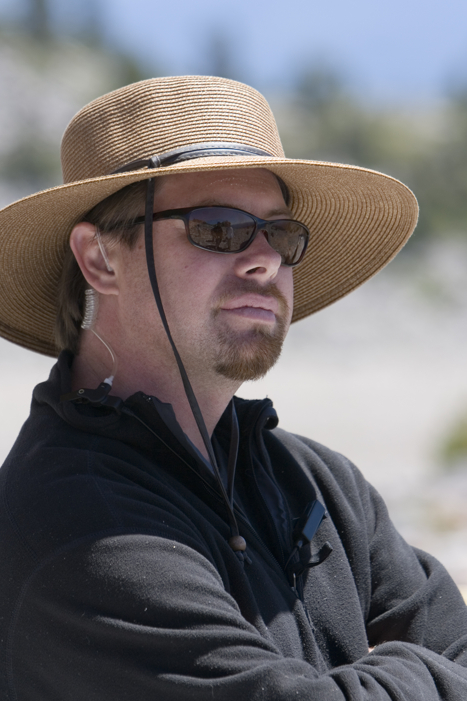
Michael Hardwick – Director of Photography
While earning his Bachelor of Arts in Cinema Production from San Francisco State University in 1994, Michael began work as a lighting and grip rental technician, learning the tools of the trade. From there he found a position as a stage manager at Colossal Pictures, a commercial production studio. He graduated to stage electrician and participated in the lighting of hundreds of national commercial spots, and later began his visual effects camera career at Colossal, serving as camera assistant and motion control operator.
Michael was recruited from Colossal Pictures to work as a visual effects camera assistant on the stop-motion feature film,James & the Giant Peach, joining the International Cinematographer’s Guild. After that he served as a camera assistant on various productions, including dozens of commercials, the TV series Nash Bridges and Party of Five, and features, including Flubber and Gattaca. He later found employment with Industrial Light and Magic, and served as Visual Effects 1st Assistant Camera on the features Galaxy Quest,Star Wars – The Phantom Menace, Star Wars – The Attack of the Clones, Star Wars – The Revenge of the Sith, Pirates of the Caribbean 3 and Transformers.
Michael moved to Los Angeles in 1997 and trained in visual effects compositing at Silicon Graphics, earning a professional certificate of training. He was accepted into the American Film Institute where he earned a Master of Fine Arts in Cinematography. While in attendance he was awarded the American Express Filmmaker’s Scholarship, sponsored by Tom Hanks. He refined his lighting skills while in school, and served as the Chief Lighting Technician on the majority of the productions produced during his stay at the AFI.
Michael has concentrated his efforts on serving as a feature film Director of Photography, and has shot 15 feature films, numerous short subject narratives, music videos and commercials in formats including 35mm Anamorphic, Super 16mm, Digital Cinema and HD formats, shepherding many of these through traditional optical and digital intermediate post production. He was awarded a Kodak Vision Award for his work in 1999, and the International Cinematographer’s Guild awarded him an ICG Award for his cinematography. In 2003 a feature he photographed, “White of Winter” was accepted into the Sundance Film Festival, and in 2005 a music video he shot for country music star Keith Urban was chosen as the 2005 CMT Music Awards Video of the Year.
Michael is continuing his work in feature films as a Director of Photography, and is currently working on and developing projects for 3D digital cinema and commercial based projects through Stereoscope Studios.
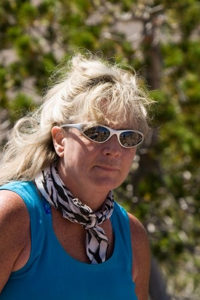
Renee Prince – Production Designer
Renee Prince was one of only a few women dolphin trainers in the country when she started college, and worked in a lab doing the first of the early cognitive studies of dolphins. Her undergraduate study at UC San Diego and her graduate work at San Diego State included experimental and cognitive psychology, human information processing, and special graduate work on concepts in consciousness. She graduated with high honors from both universities, earning her Masters degree in experimental psychology. She coauthored with Alex Morton, one of the most respected orca researchers today, a chapter in the seminal book, Behavioral Biology of Killer Whales, and coauthored several research papers on human learning and memory while earning her Masters. She has been featured in articles about dolphin research in such magazines as International Wildlife and in Alex’s latest book,Listening to Whales: What the Orcas Have Taught Us.
While Renee continued to write, she also worked fulltime as a sculptor and designer for a company that produced giant inflatable characters, creatures, and product replicas. Eventually she parlayed this job into a more long lasting career in Los Angeles working as an artist for feature films, and her sculpting and scenic art is a part of some thirty-plus features, includingThe Abyss, Rose Red, and Army of Darkness, as well as a stint on the TV series, The Wonder Years.
Over the years Renee developed a wide variety of skills, including scenic art, sculpture, foam and RTV casting and mold-making, miniatures and model-making, plastering, set decorating, and art directing, as well as working on-set as either set dresser/continuity, props, or standby painter. Her extensive art department background led to her most recent positions as production designer on several feature films.
Renee’s interest in physics, psychology and consciousness led her to working on the films,What the Bleep Do We Know?, Indigo, Into Me See and Conversations with God. She realized she had found the right place to integrate her spiritual aspect with her filmmaking experience, and work for a medium she knows and loves, for she truly loves the artistry and challenge involved in transforming a script and the filmmaker’s vision into a brilliant reality on the silver screen.

Robert Gordon – Editor
Bob has been a film editor for over 30 years and has worked on more than 30 films. However, growing up in Los Angeles, he originally wanted to be a physicist, but at UCLA he switched to film school. But before working in Hollywood, he got his start as a producer and director of public information films in Vietnam.
After he’d cut several independent features, his talent for editing musical montage attracted the attention of Randal Kleiser, who brought him to Fiji to cut his first studio film, the 1980’s The Blue Lagoon, which starred a young Brooke Shields. Bob continued to edit live-action features, with his trademark montages, often in exotic locations like the Greek Islands, Buenos Aires, Copenhagen and Rome. He also edited 1985’sReturn of the Living Dead, which was one of the first films in the horror/ comedy genre.
Bob tells how he began working as a story consultant, and eventually editor, on the first all-digital full length animated film. “A friend of mine from a company called Hi Tech Toons called to ask if I could help out on a project they had going: computer-generated feature animation. They needed someone to assemble a sequence to impress Disney, their increasingly dubious distributor, and show that they could tell a story, as well as write computer code. I flew up to the Bay area and, using my ignorance of animation editing as an asset, created a reel that had the dynamics of live-action. It ‘blew people away’, as John Lasseter later told me, and got from Disney the green light to go ahead. For the next year-and-a-half my co-editor and I worked closely with John and his team to develop the new language of CGI animation, and Toy Story–along with Pixar–was born.”
Since the release of Toy Story Bob has moved back-and-forth between the worlds of live action and animation, directing a small live action feature as well as working on the innovatively animated Final Fantasy, the Academy Award-winning short The Chubb Chubbs, Stuart Little IIIand several projects in development at Sony Pictures Animation. He is currently experimenting with a story-telling technique using classical sculpture and painting as the source of semi-animated visuals.
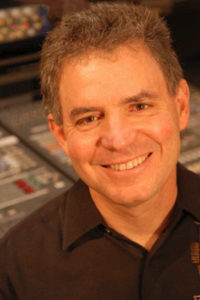
Bruce Chianese – Composer
Bruce grew up in San Diego, California where he played in numerous rock groups as well as writing for school orchestras and concert bands. After graduating with a degree in Film Scoring from the Berklee College of Music in Boston, he moved to Los Angeles where he teamed up with prominent composer Geoff Levin to engineer a recording studio in Burbank.
Over the course of 23 years Bruce was given many opportunities to compose music, both independently and as a co-writer with Geoff. The first film Bruce scored,My Neighborhood, won a 1992 Cine Golden Eagle award. Other films include Mobius, Second Chances, The Last Great Ride, Wasted in Babylon,Perfect Assassins, Hotboys, The Valley of the T-Rex, K2:Surviving the Mountain, A Kid Called Danger, Riddle of the Desert Mummies, As Time Runs Out, The Ghost Club, Quiet Kill, andTriloquist.
Bruce’s music can also be heard on many television shows such as The Sopranos, Friends,Street Sharks, and Sabrina the Animated Series. Bruce has been nominated for an Emmy Award for his work on Disney’s Spaceship Earth, as well as The Janitor, which was nominated for an Oscar. Today, Bruce owns a studio in Burbank, California where he has finished scoring his latest film, Dreams Awake.
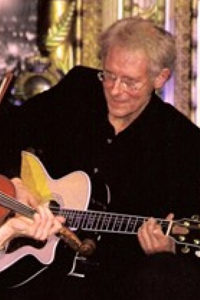
Geoff Levin – Composer
Geoff, a multi-award winning composer, songwriter, arranger and orchestrator, has scored over 30 films. Additionally, he has placed over 35 of his original songs in movies, consistently proving himself to have broad appeal and diversity in his multi-faceted work. Some of his credits include; Jimmy Zip, Perfect Assassins, Hungry Hearts and Bloody Streetz.
Geoff also has numerous TV and cable shows and series to his credit. His music can be heard on all major TV networks and cable channels. He is equally at home composing on guitar or keyboards. Geoff is also one of the three founding members of the hit storytelling group, Celestial Navigations. The others are actor Geoffrey Lewis and arranger David Campbell. The group Navigations is still going strong after 25 years together.
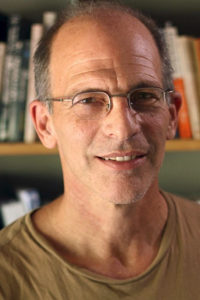
David Sonnenschein – Sound Designer
Since 1975 David has been producing and directing films to expand our consciousness and maximize our potential. Trained as a classical musician, photographer, sculptor and dancer, a number of synergistic experiences in his life led him towards sound design. He began studying the clarinet at eight, performing in symphony orchestras and chamber groups, then took up the flute with the conscious choice not to read music, but to jam, thereby developing his ear’s sensitivity and spontaneity.
As a neurobiology undergraduate at U.C. San Diego, his interests in physiology, psychology and dreams were united by research in a sleep laboratory. Fascinated by the mind-body interface, he published several studies relating brainwaves to mental states and biorhythms, and developed insight into the physiological and perceptual processes that serve as foundations for the creation of sound design. He received his B.A. in Neurobiology and directed the educational film, Phage Lambda, which utilized some of the first computer generated imagery in the world.
His musical exploration continued when he lived in Indonesia and Thailand, listening to, collecting and playing the local instruments made of bamboo, palm fronds and gourds. Upon returning to the U.S., he earned a grant from the National Endowment of the Humanities to directLittle Red Riding Hood: A Balinese-Oregon Adaptation, which mirrored the form of the Balinese mask dance, playing bamboo instruments together with the clarinet and flute, and composing a non-verbal sound track by assigning to each character a theme and instrument in the style of Prokofiev’s Peter and the Wolf.
Garnering international awards with that film, David was accepted into the MFA program at U.S.C. Cinema School where he continued exploring sound design, and was inspired by guest lecturer and master sound designer Walter Murch. His thesis film, The Owl’s Flight, a story of Mexican shamanism and the cure offered by a sacred healing mask, garnered an award from the Motion Picture Sound Editors Union. While in this graduate program he combined scientific, cultural and artistic themes in the production of 20 short dramatic and documentary films, winning numerous international prizes.
Relocating to Rio de Janeiro in 1985, David directed and produced several feature films for the Brazilian family market, some of which were top box office hits and critical successes. The first, Super Xuxa, a family fantasy adventure starring Xuxa Meneghel, the popular kids’ TV show host and singer, became the third largest box office of the year in Brazil. He made five more features in Brazil, including the top film of 1990, Crystal Moon.
This period gave David the opportunity to introduce a sound design concept to an industry that had not paid much attention to audio quality. He collaborated with Brazilian producers and directors to develop their soundtracks, while administering workshops throughout Brazil and Cuba. Finding a gap in the literature regarding the narrative use of the sound track and recognizing his sound design methodology was unique, he was spurred to write his book, “Sound Design – The Expressive Power of Music, Voice and Sound Effects in Cinema.” This book has set a new standard of sound design in the film industry and he has received numerous accolades for it.
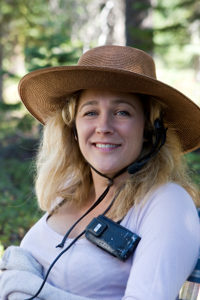
Susan Johnston – Co-Producer & Casting Director
Susan, a New England native, worked with the Providence and Rhode Island Film Commissions to build the infrastructure used by the Farrelly brothers, director Michael Corrente, NBC’s hit TV series “Providence”, the New England Screenwriters Conference and helped build three film festivals, one of which is now an Academy accredited fest. Susan also developed Context Media Studios for their international productions, garnering funds before Senate Committee hearings and creating the 25% tax incentive for investors of films in RI.
Upon relocating to Los Angeles, Susan has worked on projects in several different ways; international co-producing, talent producing, directing TV Development, and collaborating on innovative projects with her Award winning production company, Select Services Films, Inc., such as:
a) The first series ever produced for cell phones, Mini-Bikers, as producer, in conjunction with Fun Little Movies.
b) Developing the SAG Internet contract with Pierre Debs of SAG and Frank Chindamo of FLM.
c) Producing one of the first HD TV Pilots and some of the first Music Videos utilizing the Panasonic Varicam.
d) Producing for several years, The Amec Awards & the Indian Film Festival of Los Angeles Industry Leadership Awards.
Susan’s casting and producing credits include several feature films, television shows, and commercials. She has been interviewed for books such as “Hollywood Drive-What it Takes to Break In, Hang In and Make it in the Entertainment Industry” by Eve Light Honthaner; for “Career Opportunities in the Film Industry; 2nd Edition” by Jan Yager and for the successful Italian Industry book “Ciao Artista!” by Fioretta Mari and Manuella Metri. She has also taught and/or spoken at USC School of Cinema & Television summer program, Sherwood Oaks College, during Sundance, Marina Del Rey Int’l studies, Van Mar Academy and Beverly Hills Adult Education.
Susan brings the resources and talent from the production and casting company to her current position as VP of Production with Big Vision Studios Burbank, whose services include video production, technical management, professional crewing, post-production capability, sound stages, green screen and equipment rentals.
In addition, as Founder & Director of the New Media Film Festival she has brought ‘The Best in New Media-What’s New, What’s Next’, honoring stories worth telling to critical acclaim in its inaugural year of 2010.